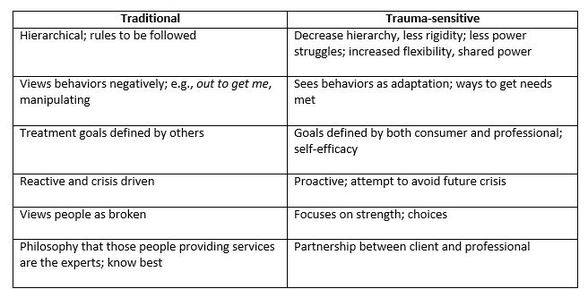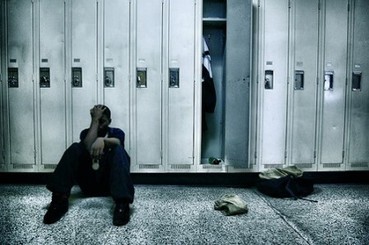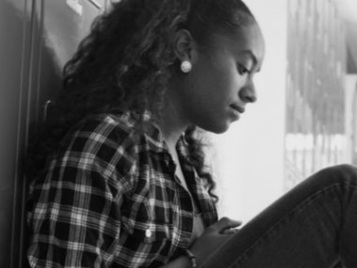Trauma-Informed Education:
Alternative Intervention to Traditional Methods of Discipline in the School Setting
General Overview
Trauma-informed teaching involves many components that aid students, who have a history of trauma, succeed academically. Our “throw-away" children are being exited out of classrooms via suspensions and/or expulsions, but the underlying issue is that educators are not trained to address the needs of students with history of trauma in their classrooms. Educators need information about how trauma impacts brain development, behavior, and learning.
There is a need for greater trauma-informed teaching practices in the school environment. Schools can benefit directly from these students' thoughts and perceptions of their learning environment as educators make decisions on what teaching strategies to implement in the classroom. Additionally, the challenges faced by court-involved youth are complex and widespread, as large portions of the youth population have had court contact, either as wards of the foster care or juvenile delinquency systems. The lived experiences of court involved youth impacts learning and school culture, and solicits youth voice in creating a trauma-informed intervention to improve student educational well-being.
There is a need for greater trauma-informed teaching practices in the school environment. Schools can benefit directly from these students' thoughts and perceptions of their learning environment as educators make decisions on what teaching strategies to implement in the classroom. Additionally, the challenges faced by court-involved youth are complex and widespread, as large portions of the youth population have had court contact, either as wards of the foster care or juvenile delinquency systems. The lived experiences of court involved youth impacts learning and school culture, and solicits youth voice in creating a trauma-informed intervention to improve student educational well-being.
Our History |
|
"Many students today experience trauma: violence, drug abuse, sexual abuse, human trafficking dominate our world. These children have been victims--directly and indirectly. Such experiences impact their brain development, behavior, and ultimately their learning. They react; they hurt. Their behavior is their outward language of pain."
Beverly A. Baroni, Ph.D., LMSW |
As a clinical and school social worker, I provided counseling services to many children and adolescents who struggled behaviorally in school. In my discussions with teachers about these clients, they were quick to judge, misinterpret behavior, and punitively discipline the students. Their parents were frustrated. Many educational discipline methods rely on humiliation; e.g., turning green card behavior card to red in front of classmates or calling them out in front of peers.
As a principal in a second chance academy, I found many teachers relying on these traditional, ineffective strategies to shape behavior. Student and staff entered into many power struggles. Students claimed they were not heard. Staff felt there were no effective consequences. Suspensions from the classroom may bring some "peace" to the room; however, it only perpetuated a student's poor academic progress. In our current educational system, teachers are taught how to teach content material; they have little training on understanding the underlying reason of behavior. They need different tools in their teacher's tool box. They need information to better understand. They need exposure to trauma-informed teaching strategies. Trauma theory gives the educator a better, richer, and deeper explanation of student’s behavior. Students are not just being oppositional or “out to get us”; they are reacting as trauma theory predicts. Their brains have been rewired and strongly impacted by their experiences. We learned, and continue to learn, new interventions.....this is what we are about. |
What makes an educational agency trauma-informed?

A trauma-informed philosophy already found its way into mental health agencies. Frameworks for providing trauma–informed care are found in the literature. The Center for Social Innovation identified five components consistent throughout the literature among the various trauma-informed frameworks:
The following summaries how a trauma-sensitive approach to care differs from traditional approaches:
This focus of trauma-informed care, although not in school settings, appeared to align itself very well with current educational challenges, including developing alternatives to suspensions strategies, increasing student achievement, and addressing the needs of the whole child.
- Providing trauma training and education
- Establishing safe and welcoming environment
- Developing trusting relationships
- Focusing on delivery of trauma-informed services
- Adapting policies and procedures to trauma informed perspective
The following summaries how a trauma-sensitive approach to care differs from traditional approaches:
This focus of trauma-informed care, although not in school settings, appeared to align itself very well with current educational challenges, including developing alternatives to suspensions strategies, increasing student achievement, and addressing the needs of the whole child.
Significance of the Monarch Butterfly
|
"Butterfly is the symbol of change, the soul, creativity, freedom, joy and color. Their power is transformation, shape shifting and soul evolution...."
"Butterflies possess the ability to grow and change, leaving the safety of their cocoon to discover a new world in a new form without fear, trusting their untested wings to fly without a doubt in their minds. They work through many important stages to become the beautiful creature they are. ... "Similar to the butterfly, we too are always moving through different stages, each equally as vital. ... "The cocoon of our thoughts and fears may be limiting, they are also safe and familiar. We can become afraid of what may be outside of our limiting thoughts and belief systems, trapping us and holding us back from ourselves, from our dreams and desires, from our unlimited potential.... "We can learn how to move on, how to grow …" "Butterfly can help you see that exiting the cocoon suddenly opens a new door, that there is power in trust and vulnerability. No more than you does a butterfly know whether it can fly, but it opens its wings in perfect confidence, and discovers that their delicacy allow its graceful flight, its dance in the air...." Source http://www.shamanicjourney.com/butterfly (Ina Woolcott) |
Dr. Beverly Baroni is the owner of all intellectual property rights of the MONARCH model in all formats and media. For access to the MONARCH curriculum and/or implementation consultation or support, please contact [email protected] and reference all material appropriately.


